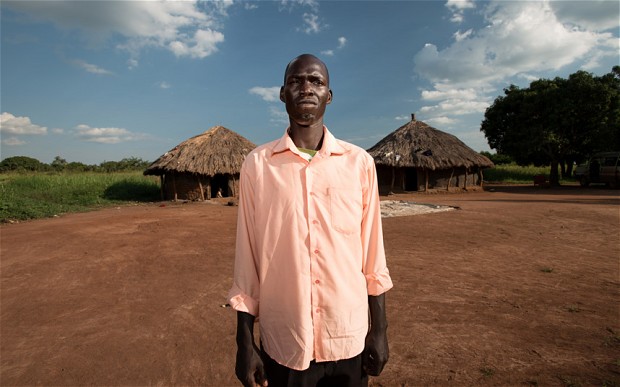Stories of LRA atrocities – including looting, displacement, rape, and abduction – have spread quickly through vulnerable communities in central Africa. To this day, hunters and fishermen enter fields and rivers with hesitation because of the LRA’s presence in the area. After 28 years of conflict, Kony’s army is still creating widespread fear. Here’s why.

Unyama IDP camp in Northern Uganda. Photo credit: Naked Chiefs
Displacement of entire communities
When the LRA started rebelling against the Ugandan government almost three decades ago, it forced thousands of people out of their homes and communities. It is estimated that at the height of the conflict, 1.7 million people were living in Internally Displaced Persons (IDP) camps in Northern Uganda. The living conditions in these camps were dreadful: sanitation and food were scarce, health conditions were very poor, and there was no way for people to make a living. These camps were supposedly created for safety, but in reality they were rife with disease and violence.
Violence against children
For years, children in Uganda left their houses at night and walked to the city centers in order to hide from the LRA. Abductees who have returned home have often suffered from post-traumatic stress disorder (PTSD), severe anger, and panic attacks because of the events they witnessed or were forced to take part in. The LRA’s method for making killers of children is three-fold: first, they must abandon all hope of returning home. Next, they must be brainwashed by the act of murder. Finally, through superstition and ritual, their new persona is inflated with a sense of pride.

Former LRA child soldier Norman Okello. Photo credit: Will Storr/The Telegraph
Norman, a former child soldier, spoke with The Telegraph about the rites abductees have to go through to become “clean:” “They mixed shea oil and water and put the sign of the cross on [my] head, lips, hand and heart. They do that to bring you and the gun together.” After the ritual, the boys had to spend three days bare-chested, showing their markings. “You feel very proud,” he recalls. “You feel you’re now one of the family of the LRA. You are one of them, you are part of them, all you have is them. You forget about home.”
Harsh punishment of local leaders
In the past, Kony’s army deterred local leaders from reporting their location to the Ugandan army by spearing and padlocking their lips shut. Individuals caught riding bicycles – an act forbidden by Kony – would have their legs and buttocks cut off, while others would be forced to torture one another.
Kony’s claimed spiritual power
Kony’s spirituality is also strongly feared by LRA-affected communities. It is believed that following the death of his elder, a witch-doctor, Kony took over the practice and developed a reputation as a powerful healer. In 1986, he became a spiritual guide and leader for the LRA. He claims to be possessed by powerful spirits with names like Lakwena, Ching Po and Piece of Evil, and says that his weapons are sprinkled with holy water.
Think people should hear about this?